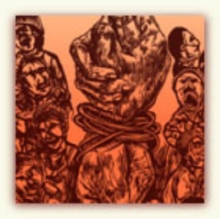This short introductory CD-ROM aims to give you a grounding in the basic principles of human rights.
Learning for Change is an integrated collection of courses developed by Fahamu in conjunction with the University of Oxford.
This CD-ROM aims to make you think about the principles and values underlying human rights.
When you have completed this CD-ROM, you will be able to: define human rights; explain how human rights are codified; understand how human rights are monitored and enforced; distinguish between economic, social and cultural rights; and, understand how the values underlying human rights affect the way in which we should run your organisation.
The CD-ROM contains a comprehensive library of all relevant declarations, conventions and documents, as well as useful website addresses on the CD-ROM.
The CD-ROM is in four parts.What are human rights? We begin by defining the term. The word 'human' means that all people are entitled to them; the word 'rights' means that these are entitlements that can be enforced by law.
We look at the values underlying human rights and how they constantly develop.
They usually emerge as a result of popular struggles against injustice. And they often do so against fierce resistance from entrenched and powerful interests.
We explore examples of these struggles.With rights come responsibilities.
We look at how individuals and governments have certain duties and obligations to respect, protect and promote the rights of others.
Human rights are not absolute and may often come into conflict with each other.
We examine the complicated issues in human rights that arise when rights conflict with each other.Monitoring, enforcement and protection: Human rights are not worth very much if they are only aspirations written on a piece of paper.
Their value is as legal entitlements that can be enforced.
So, after looking at rights, we examine how they are enshrined in law.
Laws, of course, must be enforced. The first part of the enforcement process is monitoring.
In this section, we shall explore the different forms of monitoring: in particular places, such as prisons, courts, hospitals and schools; in particular situations, such as an election and on specific issues, such as child labour or female circumcision.
We shall look at the mechanisms and bodies set up to make monitoring easier.The human rights system - in this section, we look at the treaties and laws that encode human rights as enforceable statements of law. The Universal Declaration of Human Rights (UDHR) was agreed by the newly founded United Nations in 1948.
Since 1948 the UN and other bodies have enacted treaties that give force to the rights contained in the UDHR - as well as some new ones.
The most important of these treaties are the International Covenant on Civil and Political Rights and the International Covenant on Economic, Social and Cultural Rights.
We look at all of these crucial documents. We shall examine how courts have enforced some kinds of human rights, and neglected others.
We shall also look at the set of international laws that govern situations of armed conflict.Values in a human rights organisation - A human rights organisation should reflect the underlying values of human rights - not only in its monitoring and campaigning but in its own practice. In this section, we shall examine some of these values and practices, including: respect for other people; tolerance of different points of view; participation of staff in decision-making; transparency in the decision-making process; accountability of managers, staff and office-holders; fair pay and terms of service; good working conditions; and, sensitivity on issues of gender.

